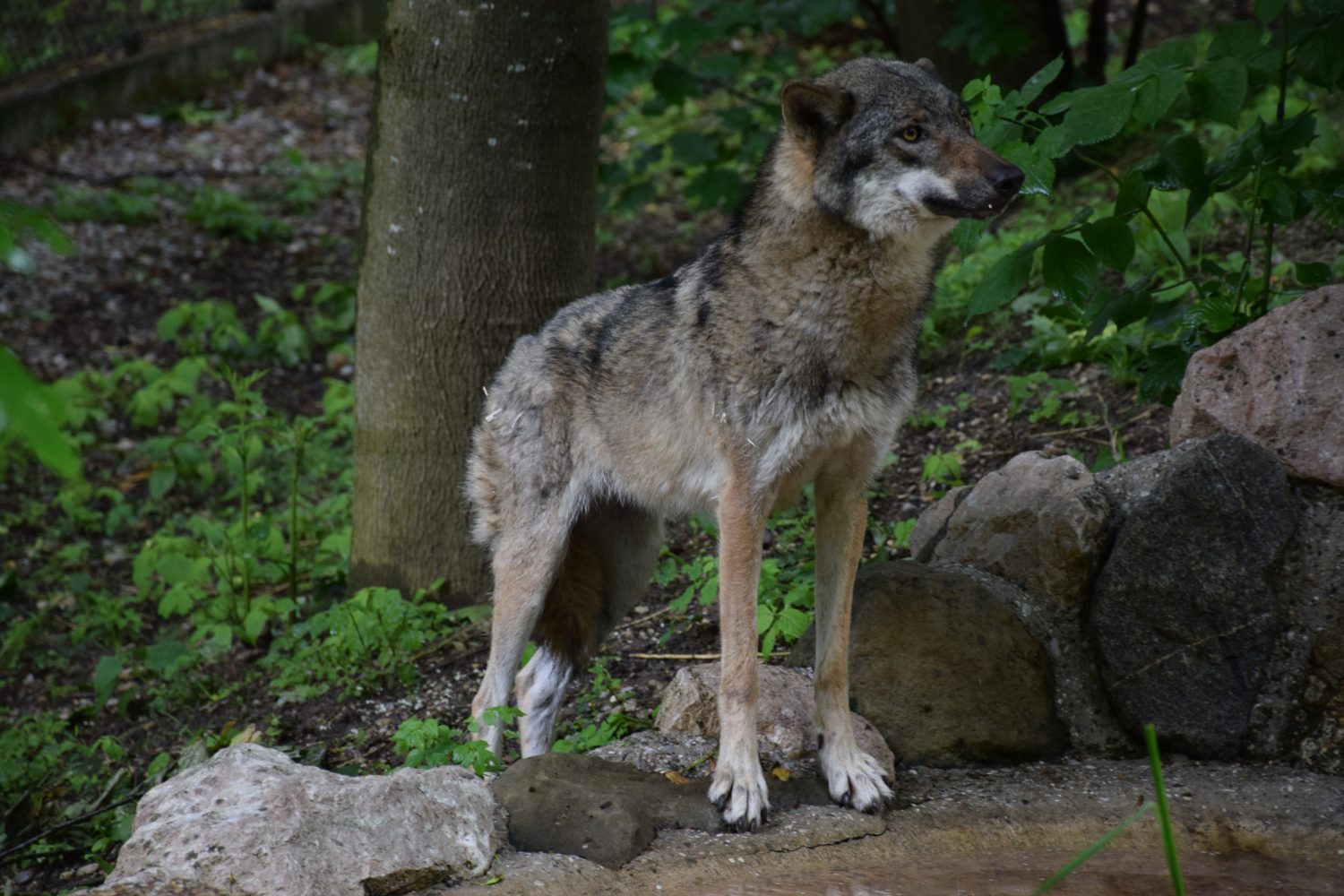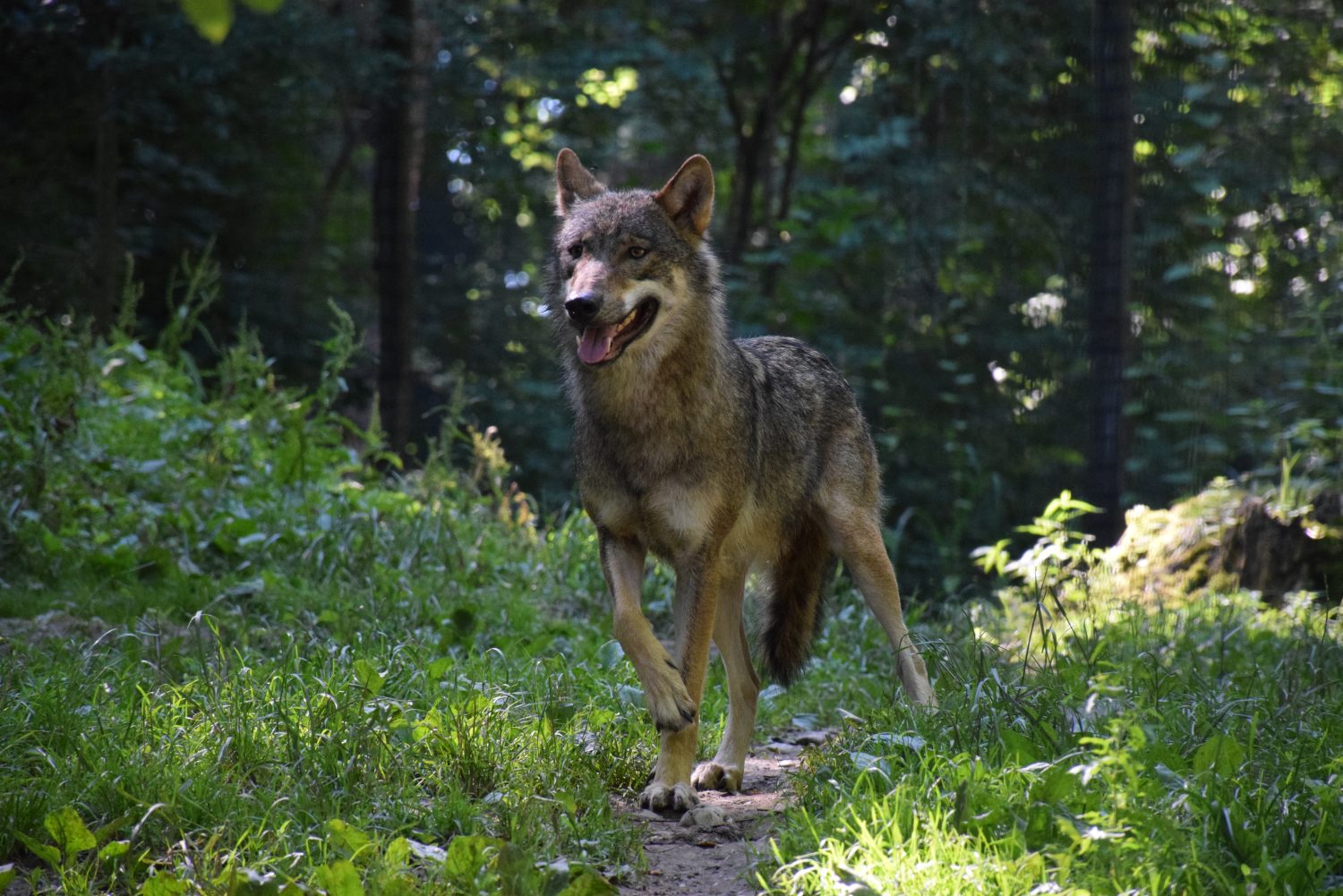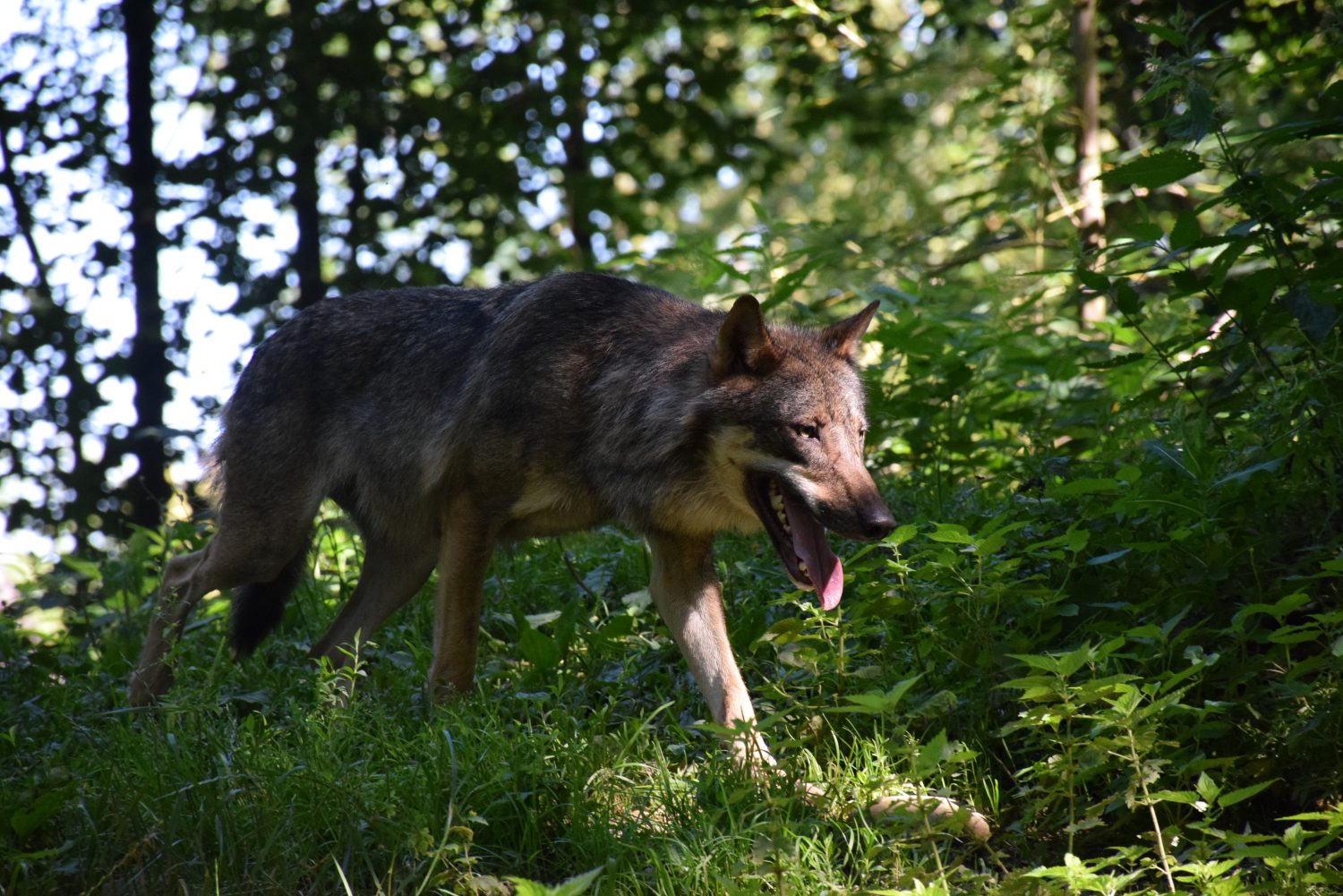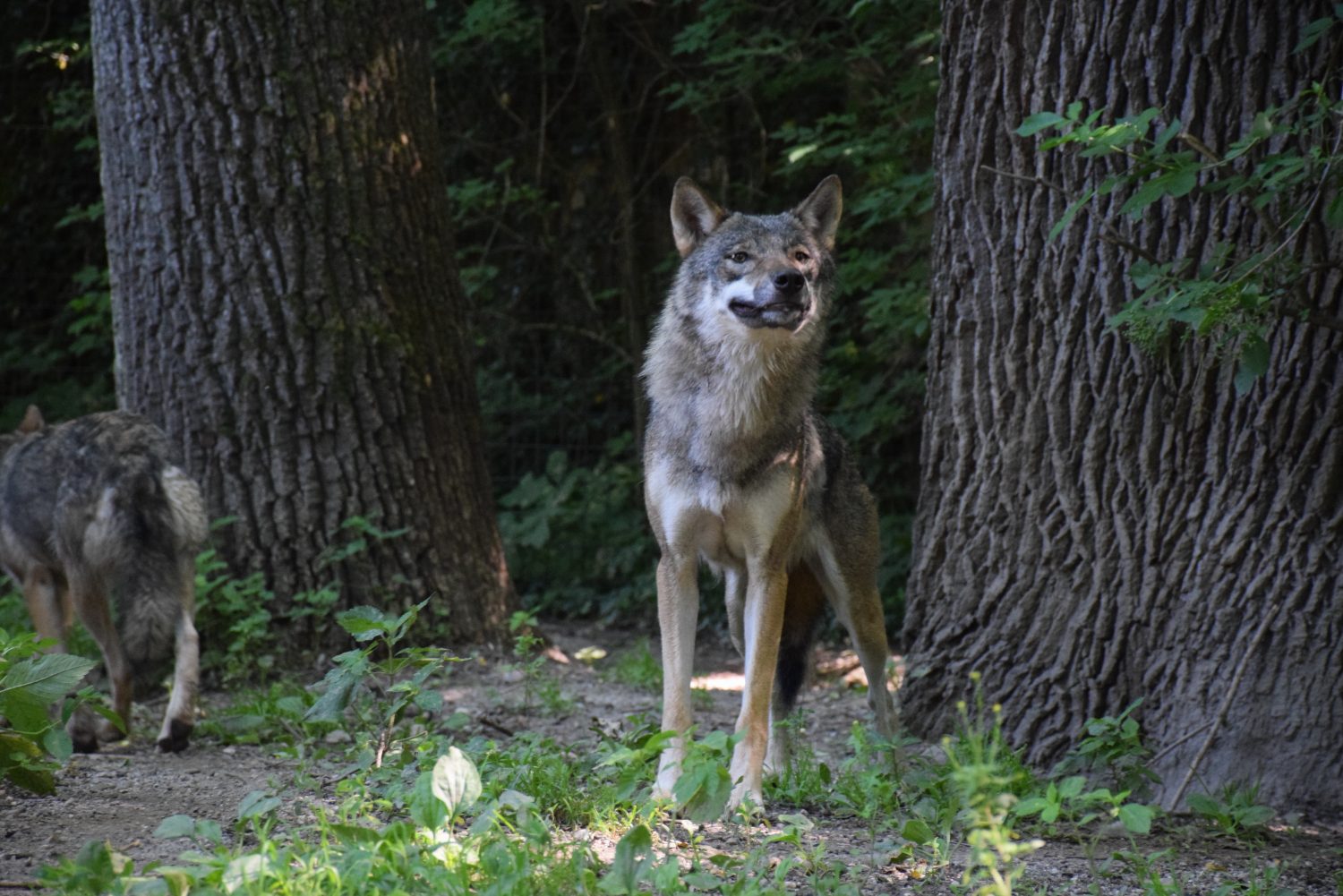Eurasian wolf / Common wolf
Canis lupus lupus
Wolves have been pushed back today, except for small remnants.
The wolf is deeply anchored in the myths of the Nordic cultures. For millennia he competed with humans for game and farm animals, while the tame wolf became the “man’s best friend” – the domestic dog.
Wolves in captivity are very intelligent and sociable. An alpha animal is at the head of a pack. Wolves mark their territory with scent marks. They only howl in a team, as the volume of the howl provides information about the size of the pack.
The wolf is very adaptable to climate, soil conditions and surroundings. Their habitat is increasingly threatened by the increasing settlement.
Hearing, sight and smell are very well developed.
A wolf can eat astonishing amounts of meat – its “wolf hunger” has become proverbial. Wolves mainly kill old, weak and sick animals, so they act as some sort of “health police”.
In addition to his body language with tail, ears and facial expression, he also has the ability to communicate with scents and a variety of sounds. The two leading animals of the pack, a female and a male, are called alpha animals.
The strong body of the wolf is more suitable for persistent running than for jumping. On the hunt, he sometimes covers up to 60 kilometers in a day.
Steckbrief
Herkunft:
From Siberia and Scandinavia to Southern Europe.Lebensraum:
forestNahrung:
deer, roe deer, wild boar, domestic animals (sheep, goat)Gewicht:
30 – 50 kilogramsGröße:
Body length up to 140 cm, shoulder height up to 90 cmErreichbares Alter:
in the wild up to 10 yearsTierpaten Ehrentafel
Gruber Angy und Achim, Behamberg
Mayer-Kerz Sabine, Aschach an der Steyr
Weinacht Werner, Steyr
Weinacht Diana, Steyr
Firma Josef Lehner GmbH, Amstetten
Mag. Sobotka Wolfgang, National Council President, Waidhofen an der Ybbs
Firma EVN AG, Maria Enzersdorf
Dipl.-Ing. Mangl Felix, St. Pölten
- “Lakota”, born 19. 05.2018
Gruber Angy und Achim, Behamberg - Wölfin „Raksha“, born 19. 05.2018
- Fetzer Andrea Maria, Wolfsbach
- “Ayla”, born 16.05.2022
Wimhofer Sandro, Ansfelden - “Nora”, born 16.05.2022
Leitner Katharina, Wien-Stamersdorf - “Fiona”, born 16.05.2022
Steinbichler Stefanie, Linz













